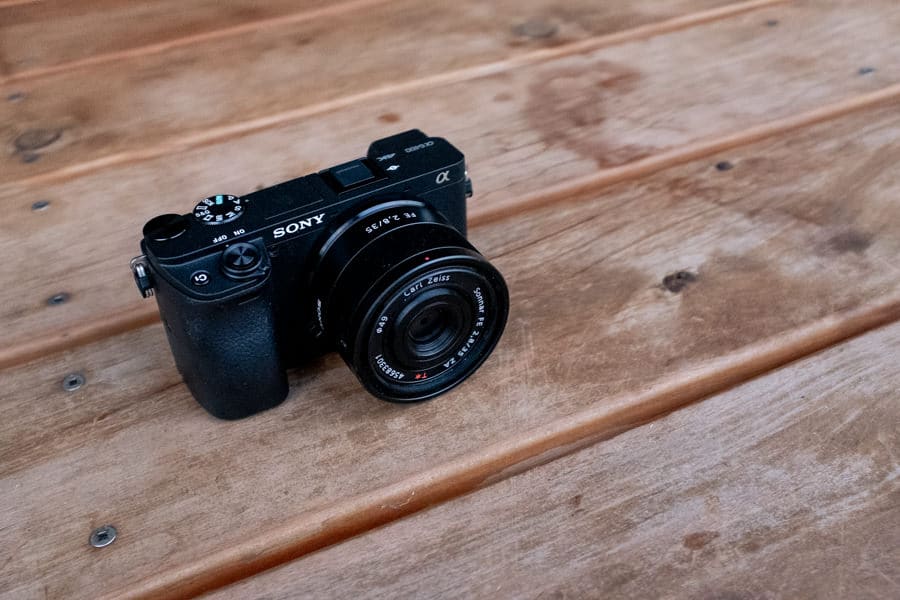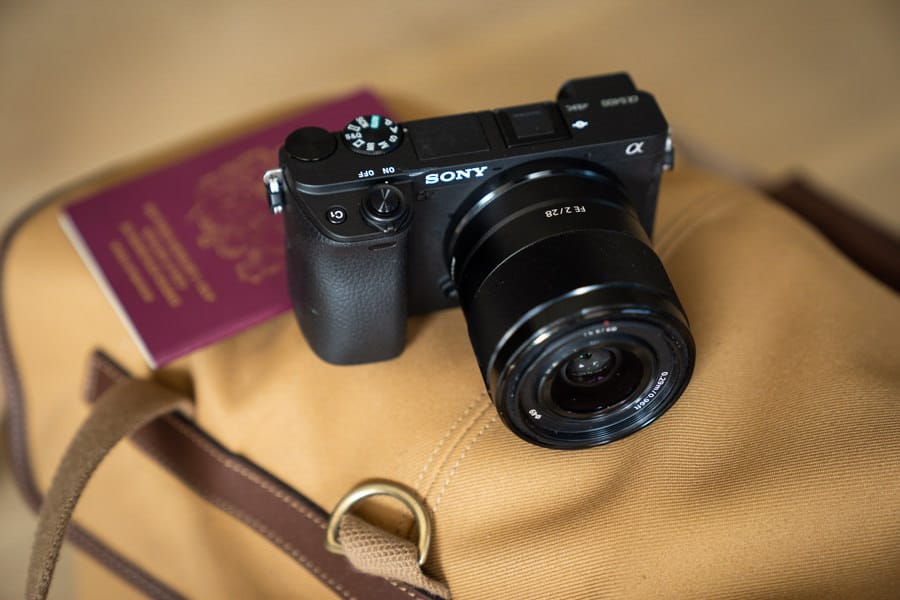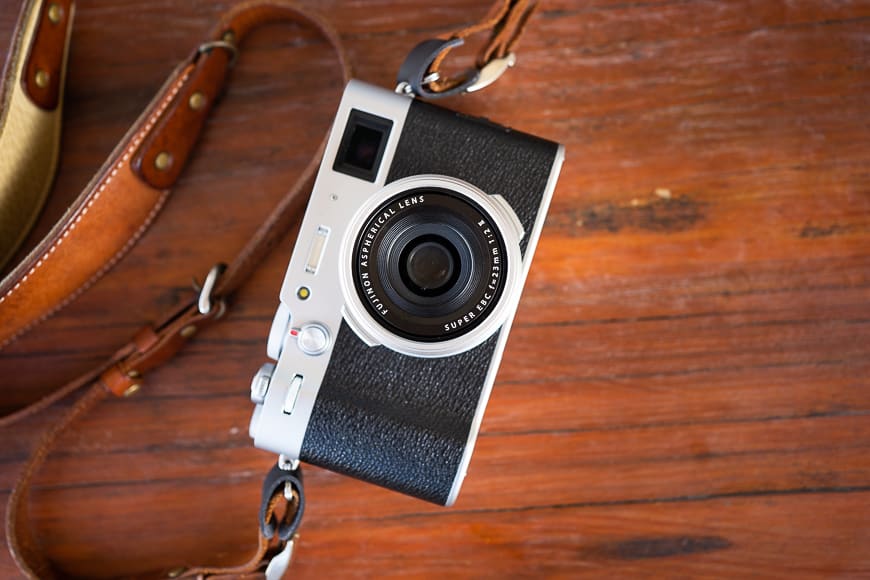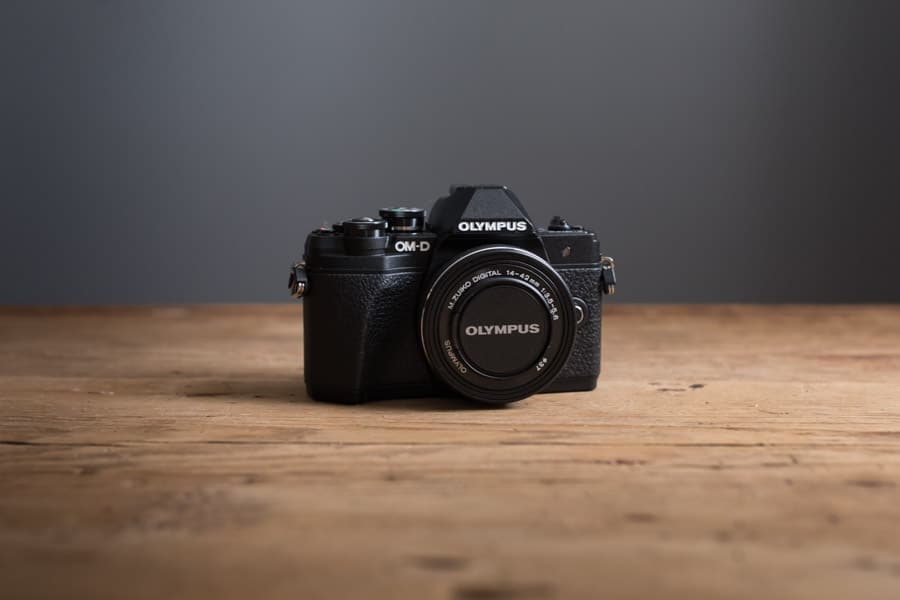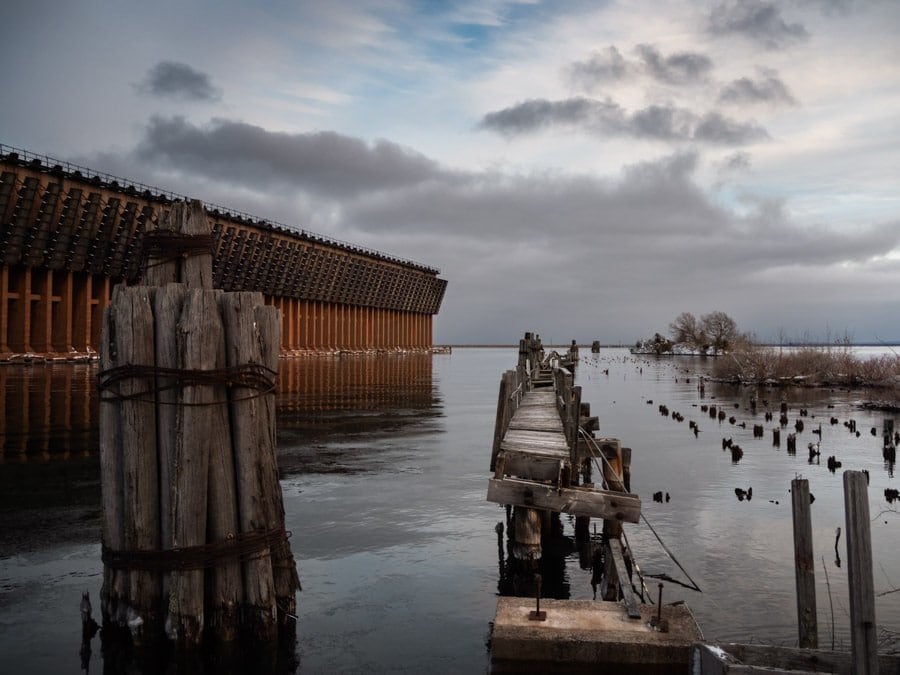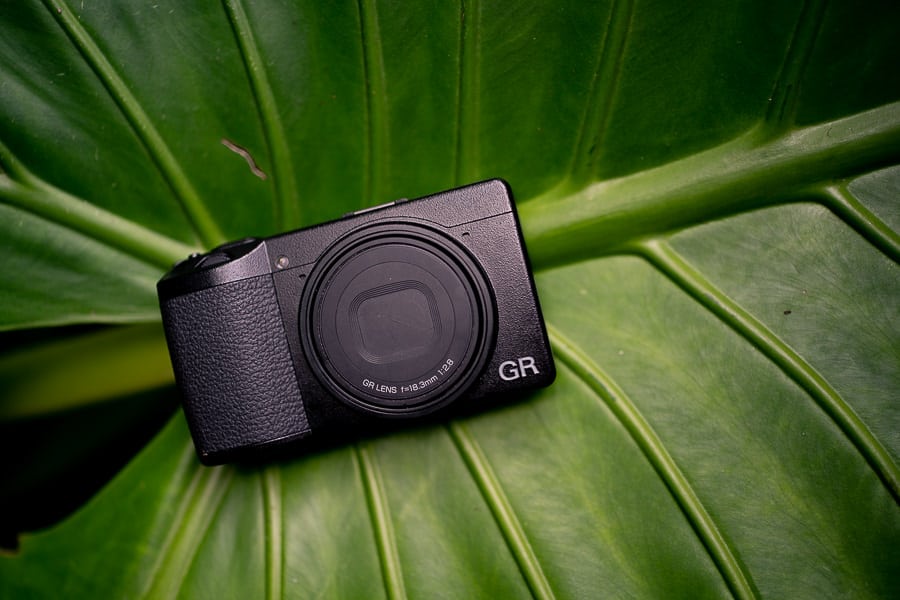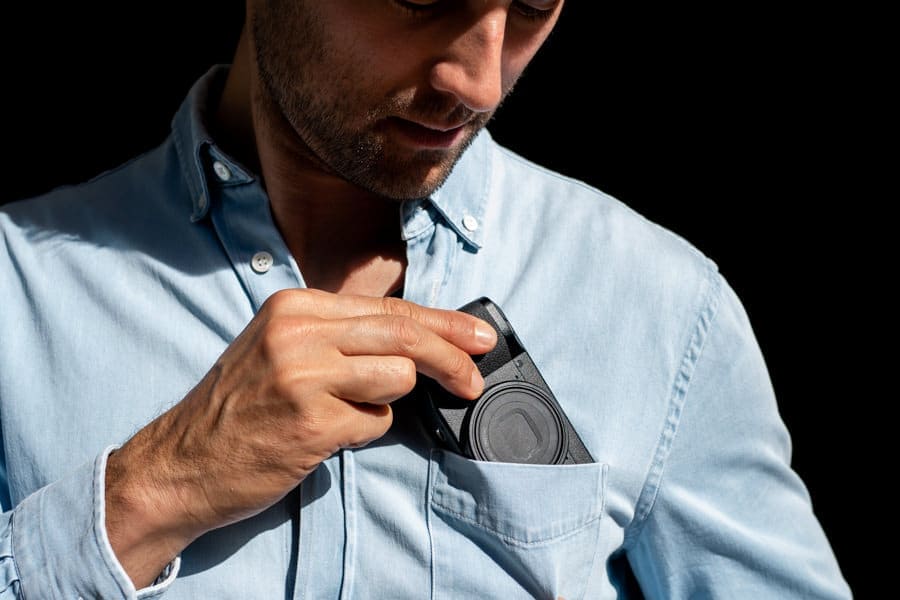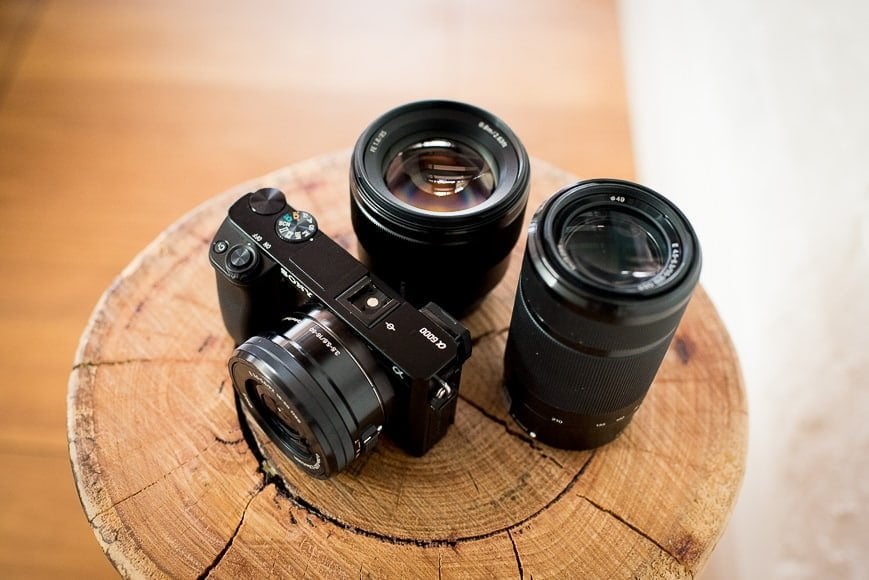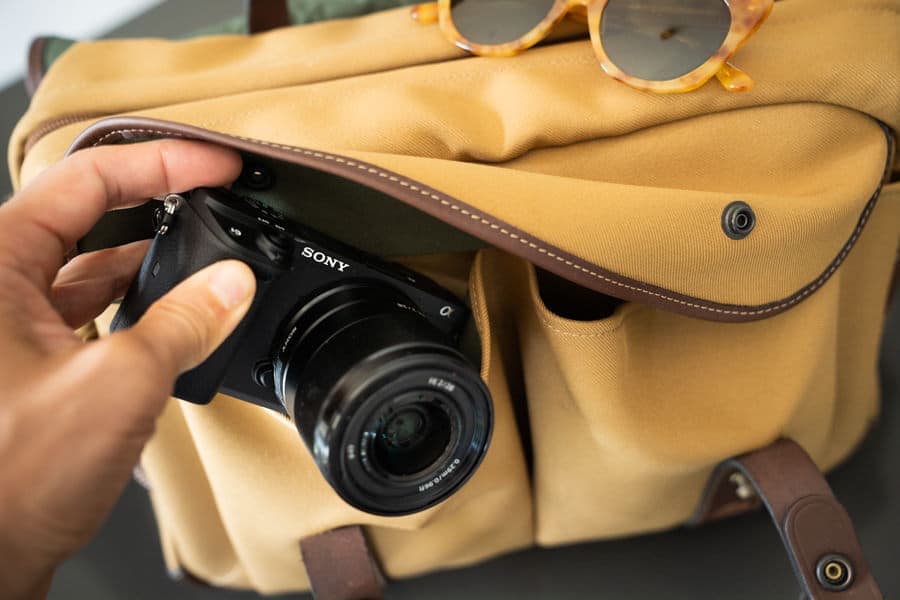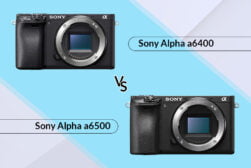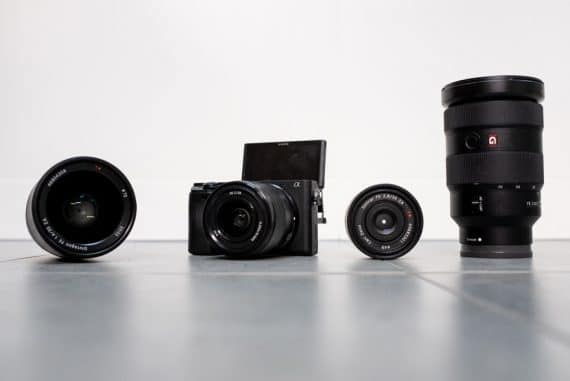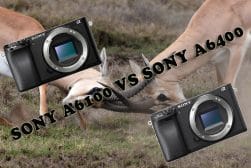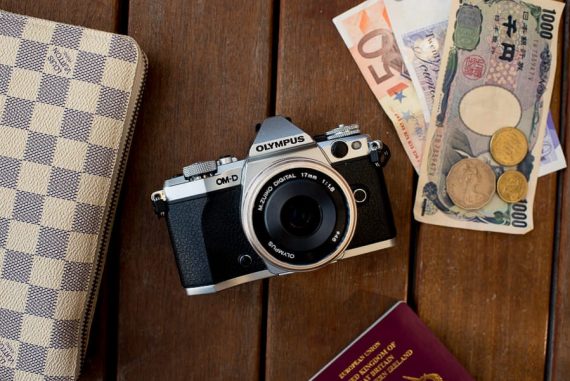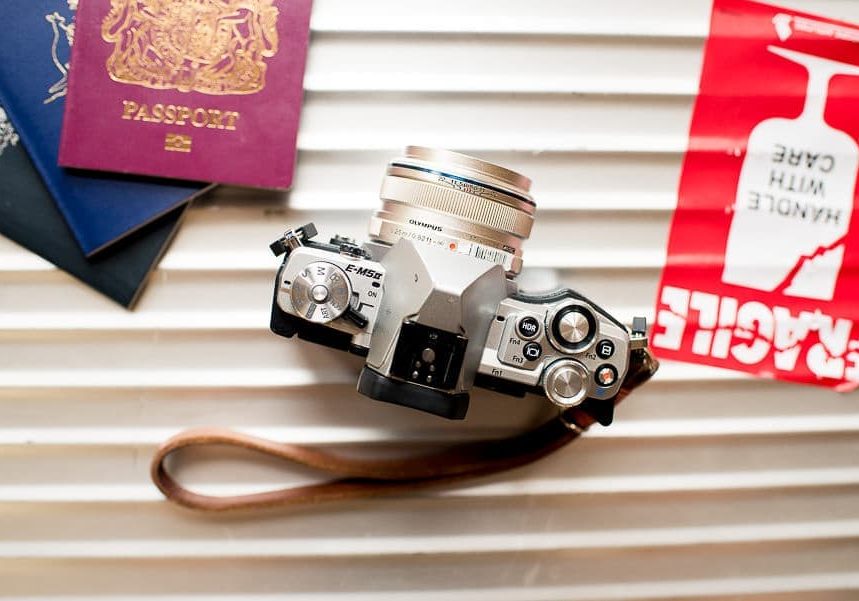
Best Travel Camera for your Photography Adventures
Need the best travel camera to take on your next trip? Lightweight, high performance and affordable - this in-depth guide reveals the 6 top options!
Camera Gear Guides | Camera Guides | By Mark Condon | Last Updated: April 11, 2024
Finding the best travel camera has been something of a never-ending quest of mine over the years.
Whether I’m travelling to shoot a destination wedding or simply on holiday with my wife and kids, I always try and carry some form of camera in my travel bag.
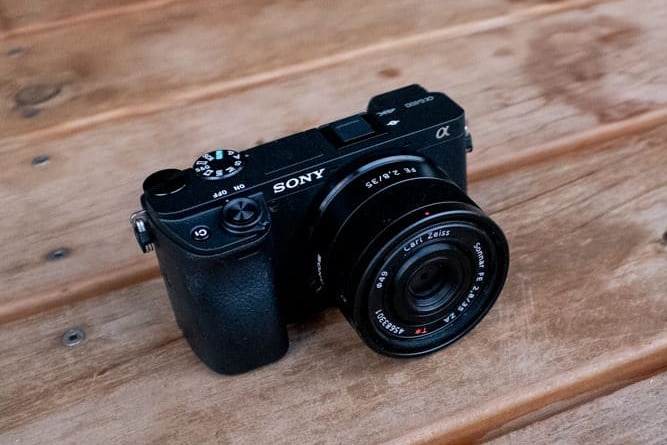
Offers incredible autofocus and amazing image quality in a compact, affordable body.
Even though you still see the odd tourist sweating under the weight of a bulky DSLR and zoom lens, the savvy traveller knows that the latest mirrorless cameras deliver the same image quality at a fraction of the size.
Capturing photos whilst travelling is essential, and having something small and lightweight to do it with is the goal.
Sure, everyone’s got a smartphone in their pocket that’s up to the job, but a dedicated camera for travel blogging is far superior.
If you really value your holiday memories, trust me – invest in a good travel camera. Ensure your new experiences are captured perfectly, for you and your family to enjoy for years to come.
Now, let’s look at the best travel cameras here in 2024.
Best Travel Cameras in 2024
| Image | Product | Features | |
|---|---|---|---|
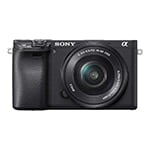 | Sony a6400All Round Best Travel Camera |
| View Price → |
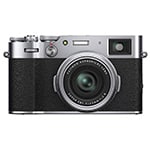 | Fujifilm X100VHighly Recommended |
| View Price → |
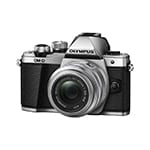 | Olympus OM-D E-M10 Mark III |
| View Price → |
 | Ricoh GR IIIBest Pocketable Travel Camera |
| View Price → |
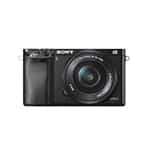 | Sony a6000Best Budget Travel Camera |
| View Price → |
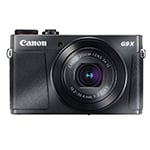 | Canon G9 X Mark II |
| View Price → |
Remember, all these recommendations are cameras that I can imagine the average person who cares about the quality of their images taking on holiday with them.
They’re not absolute bargain basement prices, (although I do include my choice of the best budget travel camera), and similarly, they’re not priced solely for the realm of pros.
Each camera will blow your smartphone out the water in terms of image quality and features, and teach you the fundamentals of photography at the same time… without being a pain in the a** to use.
In short, these are the cameras I’d recommend to any good friend who needs something to record all the precious memories on their next trip.
1. Sony a6400 | All Round Best Travel Camera
Type: Mirrorless APS-C sensor camera
Megapixels: 24.2
Size: 4.72 x 2.64 x 2.36 (120 x 67 x 60 mm)
Weight: 403 g (0.89 lb)
More Info: Sony a6400 Review
This is by far the best camera for travel photography.
The Sony APS-C sensor a6 series has been the best selling mirrorless cameras in history. Releasing what seems like a new camera body each year, it can be rather confusing which one to choose.
Last year, I spent a month with the Sony a6400 – despite newer models existing (a6100 and a6600), the a6400 is still the best bang for your buck travel camera, here in 2024.
Looks-wise, it’s hard to tell the a6400 from any of the other versions, although there’s a lot that’s changed since its predecessors.
The Sony a6400 boasts a much-improved build quality, with the standout feature of a touch-enabled, 180 degree rotating LCD screen – much to the delight of vloggers and the selfie crowd.
There are surprisingly few cameras that offer a front-facing LCD screen, but the a6400 handles this gracefully, allowing for some creative composition options while travelling.
This is one of several features that put the a6400 ahead of my previous choice of top travel camera of the year – the Fujifilm X100F (review), that offered no such LCD swivelling.
Another stand out feature is the best-in-class AutoFocus, which offers a frankly mind-blowing 425 phase-detects points, Real-time Eye AF (which also works on animals!), and Real-time tracking for moving subjects – it also works really well in a studio environment with static subjects.
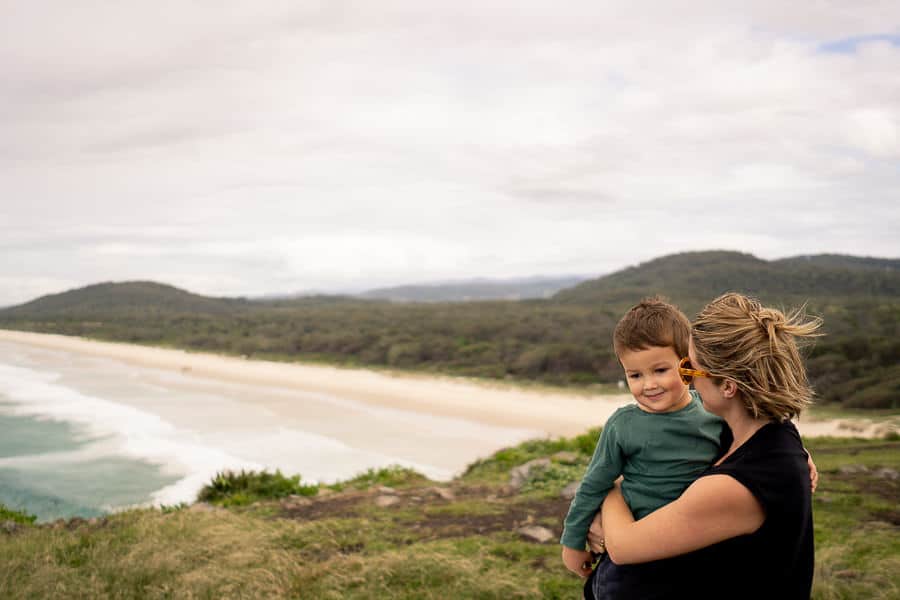
Great wide-angle with shallow depth of field by using the Sony a6400 + Sony FE 28mm f/2 | 1/4000 f/2 ISO100.
The a6400 also continues the trend of 11FPS with continuous AF, much like the first model which was released over 5 years ago.
To say that this is a camera that can handle the most demanding focusing situations while traveling would be an understatement.
A couple of years ago, Sony unveiled its flagship full frame mirrorless camera, the a9. Those that could afford it were blown away by its auto-focus abilities… and now the same technology is available in the Sony a6400 – a camera a fraction its size, and its price. This is absolutely incredible!
We’re not talking about video features in this roundup since we’re all stills photographers here, but I can’t help but mention that the 4k recording is excellent on the a6400, and coupled with the front-facing screen, a real hit for vloggers… (although investing in this SmallRig is advised if you want to use an on-camera mic – see video below).
Like its two predecessors, the Sony Alpha a6400 features the same gorgeous 24.2MP APS-C Exmor CMOS sensor, but thanks to a front-end LSI and the latest BIONZ X image processor, Sony claims processing speeds that are 1.8x faster.
In practice, this relates to a faster ‘buffer’, which means that the Sony a6400 can keep shooting 11fps for 46 RAW+JOG, 49 RAW, or 114 JPG shots.
When testing with one of my fastest memory cards, the buffer took a rather sluggish 40 seconds to clear that many shots, but I imagine it’d be rare to need to shoot so many photos in one go while on holiday.
Another reason why the a6400 is the top camera for travel of the year is its image quality, which is on par with full frame cameras twice its price.
While die-hard Fujifilm camera fans will prefer the straight-out-of-camera colours of the Fuji sensor, the Sonys still manage to produce great-looking images, full of contrast and punch.
The a6400 does a great job on Auto-White Balance, and results all the way up to ISO 6400 still look great, with minimal in-camera noise-reduction.
If you’re a pro photographer or an amateur with deep pockets, obviously investing in a full frame (35mm sensor) camera will be better in low light, and give you the ability to shoot your lenses at their native focal lengths (APS-C sensors have a ‘crop factor’, which multiplies the lens’ length).
However, the benefits of the APS-C format far outweigh full frame for travelling, namely cost, size (of camera body/lens) and all-round practicality.
Paired with a great Sony travel lens like the 24mm f/1.8, you’ll have an equivalent 36mm field of view – perfect for documentary-style travel photography.
[Related: best Sony a6400 lenses.]
Being able to shoot at 36mm with the Sony a6400, you’ll be able to capture everything from landscapes to people without distortion, while being able to fit enough in the frame to tell the complete story of your holiday.
(If your budget can’t stretch to the 24mm, the Sony 20mm f/2.8 is a more affordable option, which has the added benefits as a pancake lens of making the a6400 compact enough to slip in a jacket pocket.)
With this versatile setup, the blazing auto focus performance, and first-class image quality, the Sony a6400 is in my mind the best compact travel camera for professional photographers who need something smaller than their main body.
Not only can it comfortably be used for professional work, but it’s also beginner-friendly enough to hand to another tourist for a quick self-shot… although with the flip-forward screen, you can do it yourself.
Price-wise, at around $1,000, this is a definitely a premium crop sensor camera but could be priced much more based on the impressive features included, especially since it also shoots video in 4k.
Check out these Sony a6400 bundles for some great freebies when purchasing, like camera bags, travel tripods, spare batteries and cards.
As is typical with Sonys, there are tons of features somewhat hidden in the confusing menu, but when you have the a6400 set up as you want, you can use the physical camera buttons and dials 99% of the time. I also really like being able to focus and shoot just by touching the screen – perfect for remaining inconspicuous while travelling.
Is the a6400 better than the a6500? Yes. Is it worth twice the price of the a6000? Definitely.
Ladies and gentlemen, this is one of the best APS-C sensor cameras available right now, and rightly deserves a place in your travel bag.
2. Fujifilm X100V | Highly Recommended
Type: X-Trans CMOS IV and X Processor Pro
Megapixels: 26.1
Size: (W) 128.0mm x (H) 74.8mm x (D) 53.3mm / (W) 5.04″ x (H) 2.94″ x ((D) 2.01″
Weight: 478g (16.9oz)
More Info: Fuji X100V Review
I’ve used 3 of the past 4 iterations of the Fujfilm X100 series cameras, and now can whole-heartedly recommend the Fujifilm X100V.
Regardless of if you’re a pro or not, this is a great camera to take on holiday with you. (I also recommended it as the best compact camera.)
Running through my criteria, the price is the only area that may put some people off – at around $1,400 (click here to find today’s price), it’s clearly an investment.
In my mind though, this is actually great value for a camera that can produce such incredible image quality in such a compact body.
The size and weight of the Fujifilm X100V is what I consider to be perfect for a travel camera. It’s easily pocketable if you are wearing a jacket, and is just as comfortable worn around the neck on a strap.
It’s just the right size/weight to be pleasurable to use, whilst still remaining discreet when carried on a camera strap behind your body.
What’s more, you can carry this camera all day long and experience no annoyance or fatigue, although the grip could definitely be a bit ‘grippier’!
I use a Gordy wrist strap just to ensure against accidental drops and find that’s enough – you might prefer a shoulder strap though, so check out some of the best camera straps to see what would be right for you.
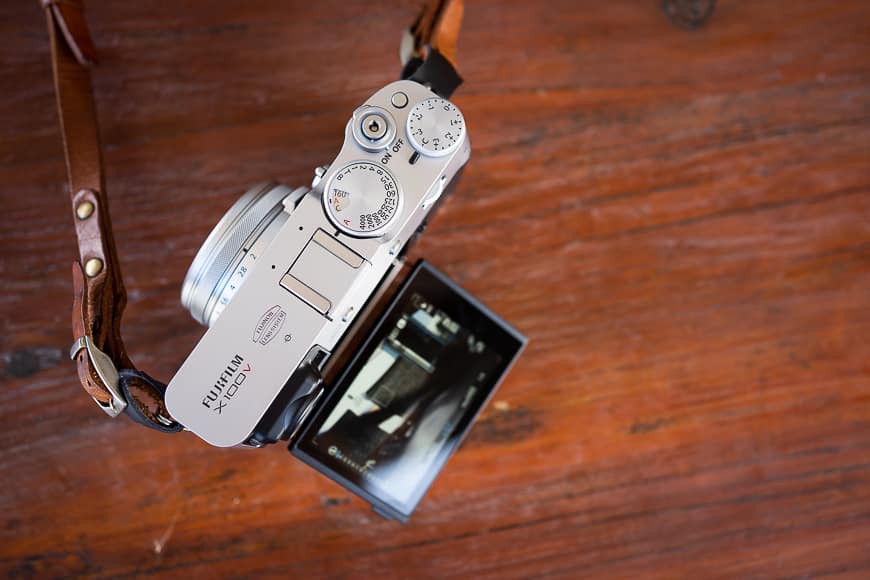
The flip-out touchscreen on the X100V is well implemented and a pleasure to use.
Moving on to image quality, and this is where the Fujifilm X100V really excels.
The whole range of Fujifilm X series mirrorless cameras are very popular at the moment for their stellar image quality in smaller bodies, and I recommend another Fuji in this list.
Fujifilm lenses are top-notch, but you won’t need any of them with the fixed-lens X100V…
I find that the brand new 23mm f/2 version 2 fixed lens on the Fujifilm X100FV is actually sharper than any of the other interchangeable X-series lens options in 2024.
I also love being restricted to only one focal length (35mm equivalent), especially when travelling.
The fixed focal length of the Fuji X100V is a draw-card over other similarly priced mirrorless travel cameras – its simplicity is what defines it, and will help you improve as a photographer, while making your travel bag much lighter to boot.
When taking a camera on holiday, it’s tempting to bring lots of lenses with you. “What if I need to photograph a whale from a boat… I’ll need a zoom lens! And what if I need to shoot a mountain range… I’ll need my best wide-angle lens!”…etc.
Don’t do it! Taking photos on holiday is meant to be fun, and with the weight and worry of multiple lenses, it definitely won’t be… especially if children are involved!
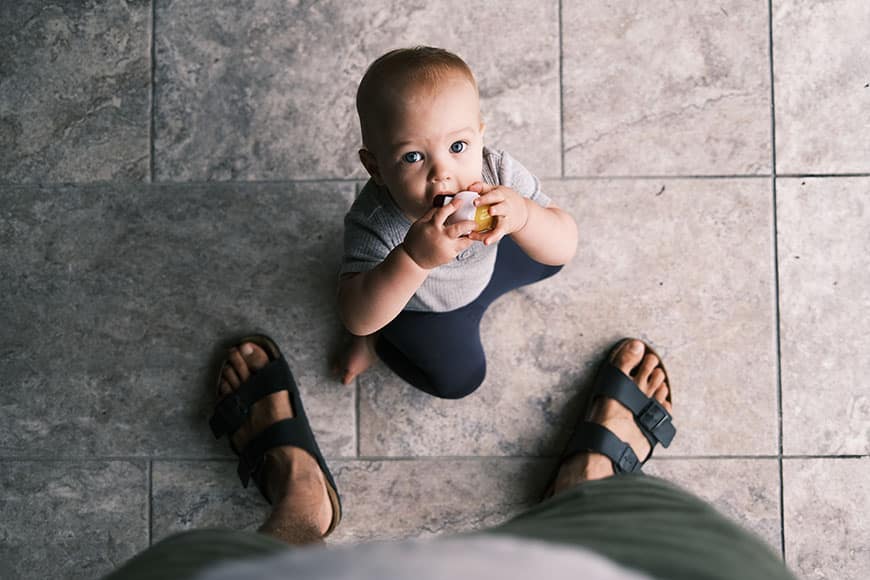
1/340 f/2 ISO100 | Straight out of camera, Pro Neg Film Simulation

150% crop – very impressive sharpness and detail from the new 23mm f/2 lens.
The Fujifilm X100V features a new fixed focal length 35mm equivalent lens with an f/2 aperture. This is flexible enough to shoot anything from portraits to landscapes, and the f/2 means you’ll be able to blur the background and/or shoot in low light without a flash.
Then there’s the new tilting LCD touch screen which allows you to get more candid travel photos, with a tap-to-shoot function that makes capturing incognito images a cinch.
Touchscreen implementation is excellent, with all the pinch-to-zoom/double-tap gestures you’re already used to from your smartphone.
Wifi transfers are fun with the free Fujifilm Cam Remote app, and allow you to wirelessly backup and/or share images taken on your holidays.
Other notable features that contribute to great image quality and flexibility are an inbuilt ND filter (allowing you to create a beautifully blurred background behind your subject even in bright sunlight); fast and precise autofocus (meaning no more blurry/missed shots); brilliant ISO (shoot at night with no flash); and something magical called the X-Trans sensor which means that a camera such as the Fujifilm X100V with a smaller ‘APS-C’ sized sensor can keep up with the big (full-frame sensor) boys!
I also love the 17 film-simulation modes, which apply Instagram-like effects to your images which accurately imitate popular Fuji film stock from days gone by.

You’d be forgiven for thinking this was taken by a 35mm film camera, but it’s actually the ‘Pro Neg’ film simulation of the X100V.
I love the ability to shoot confidently in JPEG, knowing that I won’t be spending hours editing RAWs in front of my computer.
Shooting in RAW + JPEG allows you the choice of increased dynamic range in post-production with the RAW file, but honestly, this is a camera that begs to be shot JPEG-only.
Wirelessly uploading straight-out-of-camera JPEGs to your devices, then to social media is a huge workflow time-saver, and the gorgeous film-simulation modes make editing a thing of the past.
Another great feature of the Fujifilm X100V is the fast autofocus system, which offers effective face and eye detection.
This is especially hand when shooting fidgety children – it’s spookily accurate!
I leave the camera on single-point focus and allow it to recognise faces in the frame, so I can capture any moment quickly and easily.
‘Design’ or ‘aesthetics’ isn’t one of my criteria for finding the best travel camera as it’s entirely subjective.
However, I should add that the Fujifilm X100V is the best looking camera I’ve ever seen. For me, it’s even more beautiful than a Leica, and there are a ton of great Fuji accessories with which to make it look even prettier!
The Fujifilm X100 series of cameras have always come in either silver/black or all black. Both have a unique film camera styling to them and the all-black model is especially discreet. It attracts no unwanted eyes since it’s easy to miss, but to the trained eye, it always attracts compliments :-)
Ah, one more thing I love about this camera – you can charge it via your laptop’s USB port or a battery pack, meaning one less battery charger to carry.
If you’re ready to invest in a camera for travel that has image quality so good that it can even be used professionally, I highly recommend the Fujifilm X100V. The best travel camera for professional photographers and beginners alike.
3. Olympus OM-D E-M10 Mark III
Type: Mirrorless micro four-thirds sensor camera
Megapixels: 16
Size: 122 x 84 x 50 mm (4.8 x 3.31 x 1.97″)
Weight: 410 g (14.46 oz)
More Info: Olympus OM-D E-M10 Mark III Review
The Olympus OM-D E-M10 Mark III is a smaller, lighter, newer and more affordable version of a camera I named the OMD-EM5 Mark II. It was the camera I used for travel before I bought the Fuji mentioned above.
One thing to mention right off the bat is that the Olympus OM-D E-M10 Mark III is an inter-changeable lens camera.
The price of around $650 is actually great value, but it’s for the body only, so you’ll also need to invest in a lens.
There’s a camera + lens bundle option available here which is perfect for most people, but if you want to really make the most of the Olympus’ stellar image quality, I’d recommend you invest an M.Zuiko 17mm f/1.8 lens – it’s a 35mm equivalent lens suitable for everything from portraits to landscapes, can be shot in low light, and produces great blurred backgrounds for subject separation.
(Check out the best micro four-thirds lenses for more options that work well on this camera.)

Using the Olympus O-MD E-M10 Mark III in combination with M.Zuiko 17mm f/1.8 allows you to blur foreground and background elements easily. Black and white in-camera JPEG conversion applied.
I’d recommend you steer clear of bulky zoom lenses, since this defeats the object of having a small camera for travel.
The size and weight of the Olympus OM-D E-M10 Mark III is perfect even for larger hands, and can be carried effortlessly around the neck.
So with price and size/weight accounted for in my aforementioned list of criteria, let’s move on to that all important image quality.
The Olympus OM-D E-M10 Mark III uses a 16 mega pixel micro four thirds sensor which produces amazing image quality for such a small sensor.
When shot in JPEG format, images are sharp, vibrant and contrasty, although this will depend on your in-camera settings and lens choice of course.
There’s also the option of RAW for those who enjoy more flexibility in editing photos after shooting.
Another stand out feature of the Olympus OM-D E-M10 Mark III is the auto-focus. In practice, I’ve found the 121-point auto-focus to be even faster than my pro-grade dSLR which costs twice the price. It’s also the fastest auto-focus of any of the cameras on this list.
You can actually focus and shoot just by touching the screen on the Olympus OM-D E-M10 Mark III, which swivels to allow for more creative and convenient framing of your shot.
I know I said I wouldn’t dwell on individual camera features outside of my main criteria, but let me just say that the combination of lightning fast auto-focus and swivelling touch-to-shoot LCD screen is the number one reason you should consider buying this camera – it really is that good, and makes photography a lot of fun.
Silent shooting mode is also invaluable when trying to get candid photos of the kids, or when shooting locals whilst travelling – often it’s important to remain as discrete as possible, and this camera allows you to do this, all while shooting from the hip with the flip-out screen.
The Olympus OM-D E-M10 Mark III has plenty of manual control features that I won’t go into here, but even if you leave the camera on an Auto setting and just prod the screen to take photos, it’s entirely worth the cost. I wish every camera had this functionality!
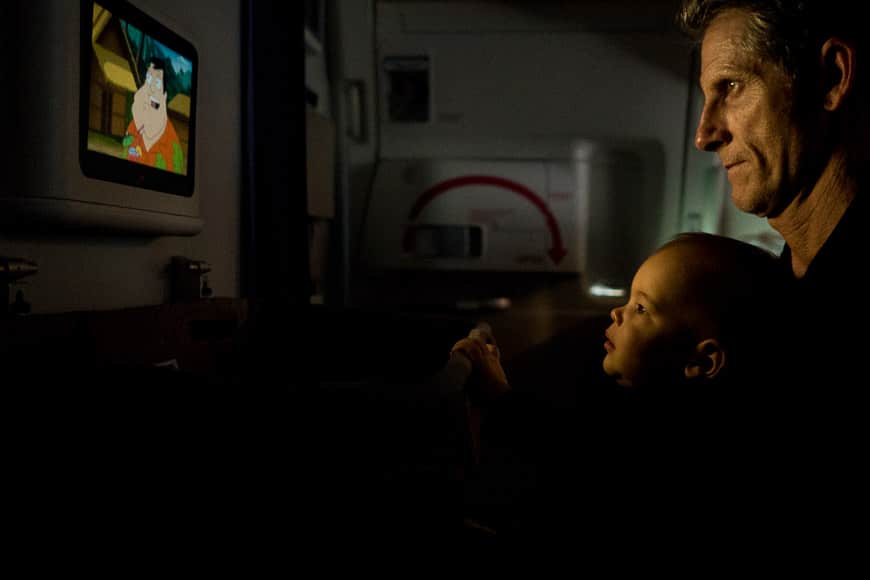
Medium-high ISO on the Olympus O-MD E-M10 Mark III is impressive for a camera of this size. This was shot at ISO1600 in almost pitch darkness on a plane and retains accurate colours and little noise.
Another unique feature of the Olympus OM-D E-M10 Mark III is the 5-Axis image stabilisation. This works great for video recording, giving you smooth, Steadycam-like footage.
For still images, it allows you to hand hold the camera at much slower shutter speeds than normal, meaning cleaner, sharper low light photos thanks to the ability to lower your ISO.
16.1 megapixels is more than enough to print out your images as wall art, but it’s worth remembering that all micro-four-third sensor cameras such as this Olympus will record photos in the 4:3 ratio, probably different to what you’re used to.
You can ‘force’ the camera to shoot at a more standard 3:2 ratio by cropping the image (which is what I did for all the sample photos here).
Overall, the Olympus OM-D E-M10 Mark III is a great-looking, lightweight, compact and robust camera that offers some unique features and excellent performance, making it perfect for travel.
It’s available in discreet all-black or a retro silver-black option that’s equally sexy. I highly recommend it as a camera to document your next trip.
4. Ricoh GR III | Best Pocketable Travel Camera
Type: APS-C sensor pocket camera
Megapixels: 16.9
Size: 4.6 x 2.5 x 1.4 in. (117 x 63 x 35 mm)
Weight: 251 g (0.55 lb)
I tested the previous generation of this camera a few years back, and while I found the image quality impressive for its size, the sluggish autofocus performance annoyed me. Thankfully, with the GRIII, Ricoh has made a much snappier experience with the Ricoh GRIII.
It also offers a new 24MP sensor (a significant resolution boost), a sharper lens with macro capabilities, a hybrid autofocus system, better battery life, image stabilisation and even a nice and responsive touchscreen.
The 3-axis sensor stabilisation is great, and worth the additional money for the III over the II – I was able to take handheld shots with a shutter speed as slow as 1/2 second, allowing me to blur motion without the use of a tripod!
This is a great feature when you’re travelling, and want to take a photo at a crowded tourist attraction – now you can blur out people walking by, to remove them as a distraction and create a more engaging photo.
The touchscreen on the Ricoh GRIII is great – snappy and responsive, with a tap-to-focus-and-shoot function, which all cameras should have. It allows for the inconspicuous photos – perfect for incognito travel photography.
Image quality is excellent, and I particularly like the colours from the JPEGs. I like shooting in Vivid Mode, with the contrast increased for some additional punch, like in the photo of our son Harry throwing a paper aeroplane below.
RAW quality is also impressive, with a decent amount of dynamic range from the APS-C sensor. If you’re coming from the previous version, there are 8 additional mega pixels, which helps to make images sharper and give you the ability to crop.
The 18.3mm (28mm equivalent) lens’ width is unchanged from the GRII, which is good news – 28mm is fun and easy to shoot, with minimal distortion, and provides a unique perspective which can immerse the viewer into the shot, without feeling too wide.
As for the design and ergonomics, this is what I love the most about the Ricoh GRIII – minimal branding, buttons that blend into the body, and a rubberised grip that’s moulded perfectly to your fingers. You’ll slip by virtually unnoticed when using this on holiday, allowing you to capture candid moments of locals or your family. Definitely not your typical “tourist camera”.
The Ricoh GRIII is one of the smallest cameras I’ve used, but it still retains excellent ergonomics, which isn’t an easy task. I love the fact that I can slip it into my shirt pocket, and I hardly know it’s there – it really is light as a feather.
The grip on the front of the Ricoh GRIII is sticky and moulded enough to allow you to use the camera one-handed all day long, in landscape or portrait orientation.
The battery life could be better (I got around 280 shots per charge), and I do wish the touchscreen rotated, but other than that, there’s not much to complain about the design itself.
Focusing in really low light was sometimes troublesome, with the AF point hunting back and forth to find the subject. On the flip side, in bright sunlight, the glossy LCD screen (and lack of viewfinder) made it a little hard to see too.
However, these are all minor niggles on a really enjoyable camera that takes fantastic photos, with minimal editing required, all for an impressively affordable price.
Don’t let the Ricoh GRIII be the camera you’ve never heard of! It’s a truly unique product, and one that deserves a lot more of the limelight than it receives.
5. Sony a6000 | Best Budget Travel Camera
Type: Mirrorless APS-C sensor camera
Megapixels: 16
Size: 4.72 x 2.64 x 1.77″ (120 x 67 x 45 mm)
Weight: 0.76 lb (344 g)
More Info: Sony a6000 Review
If your budget can’t quite stretch to the other offerings in this guide, don’t despair – the Sony a6000 is still the best budget travel camera money can buy.
I say ‘still’ since this is a camera that’s over 5 years old… but don’t let that put you off. It’s also the best selling mirrorless camera in the world.
For the incredible price of around $400 (latest price here) for the body only, you can get one of the many lens bundles for a little bit more and have yourself an amazing set up, ready to take on your next travels.
You can check out my full review and selection of the best lenses for the Sony a6000, but the long and short of it is this:
The Sony a6000 remains the best bang for the buck camera for travel in 2024. No other camera offers such high image quality and lightning fast auto-focus in such a compact body, for such a bargain price.
At only 0.76 lb (344 g) and as pocketable as a smart phone, the balance and portability set it apart from bulkier inter-changeable lens offerings, but you need to be careful when pairing it with the range of Sony e mount lenses.
My choice of lens to go with the Sony Alpha a6000 for taking on holiday would always be the Sony 20mm f/2.8 – a ‘pancake’ lens with proportions that makes the camera an absolute joy to use.
It’s a 30mm equivalent field of view, meaning its wide enough for most things you’ll encounter whilst travelling, but can still be used for portraits.
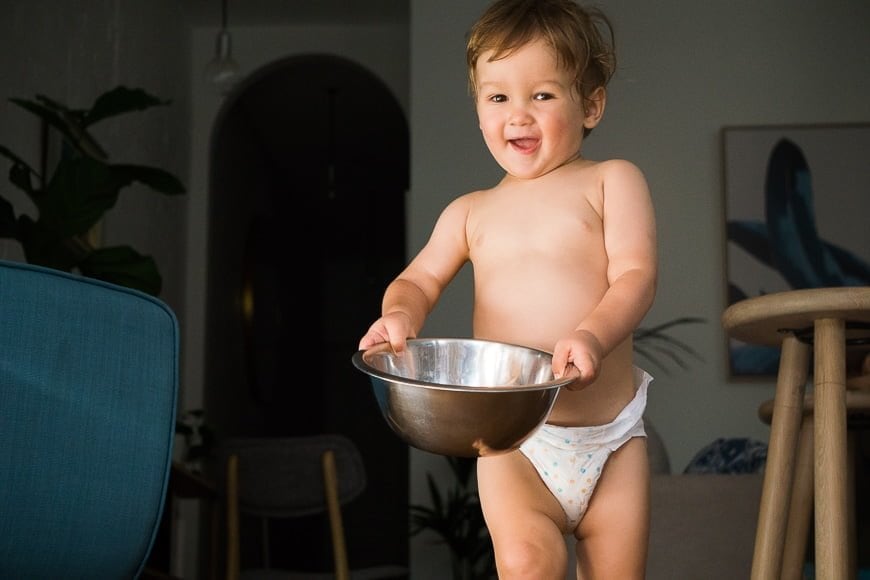
Sony a6000 + Sony 55-210mm f/4.5-6.3 | 1/320 at f/5.6 ISO 3200 | Image quality is crisp and clear even at ISO 3200
Whatever lens you choose for the Sony Alpha a6000, the image quality is excellent, especially when you consider the camera’s sensor is ‘only’ APS-C size.
Colours are vibrant and details are sharp in JPEG format, and the RAW files provide adequate dynamic range to push/pull your images, squeezing every last drop of editable data from them.
Things really start to impress when shooting at higher ISOs, with photos being relatively clean even up to ISO 25,000.
In practice, this means you can take photos at night just by using the ambient light around you. On holiday, this is great since it means you won’t draw unwanted attention to yourself whilst shooting without a flash.
At its launch, the auto-focus on the Sony Alpha a6000 with its 179 phase-detect focus points spanning almost the entire area of the viewfinder, would have been considered class-leading. Here in 2024, the several successors to this camera boast many more focus points, but this is not really an issue- 179 focus points is more than enough for most situations.
Either way, the AF on the a6000 is able to effectively track fast subjects at up to 11 frames-per-second – truly remarkable for a camera at this price and much faster than most DSLRs.

Sony a6000 + Sony 85mm f/1.8 FE | 1/250 at f/1.8 ISO100
Having such fast auto-focus and frame rate on a camera makes it great for travel to capture images of locals whilst whizzing past on a bus, or simply to get a shot in focus of your child jumping into the pool.
Another neat feature is the WiFi and NFC connectivity, which allows you to share your travel photos to social media, transferring them from your camera straight to your smartphone or tablet.
This is ideal whilst travelling, meaning you don’t need to bring your bulky laptop.
One slight drawback with the a6000 (and indeed, any Sony mirrorless camera), is the confusing menu. However, once you’ve set the functions up to your liking, you can reach all the main functions by using the camera’s physical buttons, which are all in easy reach.
With the right lens for you attached to it, the Sony Alpha a6000 is a great budget camera for travel and definitely deserves its place on this list.
If you only have around $500 to spend, you’ll be getting a camera that can run rings around your smartphone’s camera, while still being able to fit inside a jacket pocket.
6. Canon G9 X Mark II
Type: CMOS sensor pocket camera
Megapixels: 20.2
Size: 3.9 x 2.3 x 1.2 in (9.8 x 5 x 3 cm)
Weight: 206 g (0.45 lbs)
As another affordable camera for travel, the Canon G9 X Mark II is a great little point and shoot camera to consider for your next trip.
For under 500 bucks, you’re getting impressive image performance from a camera that’s small and light enough to have in your pocket all day long.
At only 0.45 lbs (206 g), the Canon G9 X Mark II is the lightest camera on this list. However, it also has the smallest sensor (CMOS) out of all the other cameras – so why have I included it here? Small sensor = crap image quality, right?!
Well, not quite. The sensor is actually much bigger than that one found in even the most high-end smartphone, and with a better lens and image processor to ensure the Canon G9 X Mark II can do things your phone simply cannot.
Similar to the Ricoh mentioned above, the Canon G9 X Mark II doesn’t have a viewfinder, meaning you’ll have to rely on the touch LCD screen. Fortunately, it’s bright and sharp and 3″ in size to ensure you won’t be squinting.

A combination of fast auto-focus and impressive low light performance enables the Canon G9 X Mark II to capture images like this without using flash.
Some people love touchscreens but some prefer physical buttons. Whilst the Canon G9 X Mark II features a few buttons for the most needed functions, you’ll have to use the touch screen to access everything else, even moving the focus point. Less buttons does mean less chance of buttons sticking though, which can happen after frequent travels with a camera.
The Canon G9 X Mark II features a 28-84mm equivalent lens with an f/2 – 4.9 aperture. Since this zoom lens adds no bulk to the body of the camera and remains lightweight, I have no hesitation in recommending this Canon as a good camera for travel.
28-84mm means wide-angle focal length to medium telephoto. In practice, I was able to shoot any landscape image with ease, then quickly get a close-up shot of passing wildlife. Shooting at 84mm when your subject is relatively close will also put the background nicely out of focus too (‘bokeh’).
f/2 means that the Canon G9 X Mark II does well in low light and can blur the background and/or foreground nicely, depending on how close you are to the subject.

When shot at f/2, the Canon G9 X Mark II is able to produce pleasing bokeh (blurred foreground and background elements) similar to a camera with a much bigger sensor.
As for image quality, the DIGIC 7 image processor used by the Canon G9 X Mark II ensures that JPEGs are very impressive for a camera this small. RAW images are decent too, offering some flexibility during post-processing.
Personally, post-processing is the last thing I want to do after a holiday with the family, but it’s nice to know there’s RAW functionality there if needed.
The Canon G9 X Mark II also offers Auto ISO, a nice addition to a compact camera at this price point. The ISO range is 125-12800, but I’d only feel comfortable using a maximum of ISO1600 to ensure the clearest photo possible.
In practice this means that with Auto ISO applied, you can comfortably let the camera decide when to raise and lower ISO from morning to dusk. After that, you’ll need to rely on the camera’s flash.
Speaking of the flash, it’s a little on the slow side to recharge. Also, on battery life, the Canon G9 X Mark II can only manage around 240 shots per charge. I find I rarely shoot more than 200 photos per day whilst travelling, but if you’ve got a heavy shutter finger, you might want to pick up a couple of spare batteries.
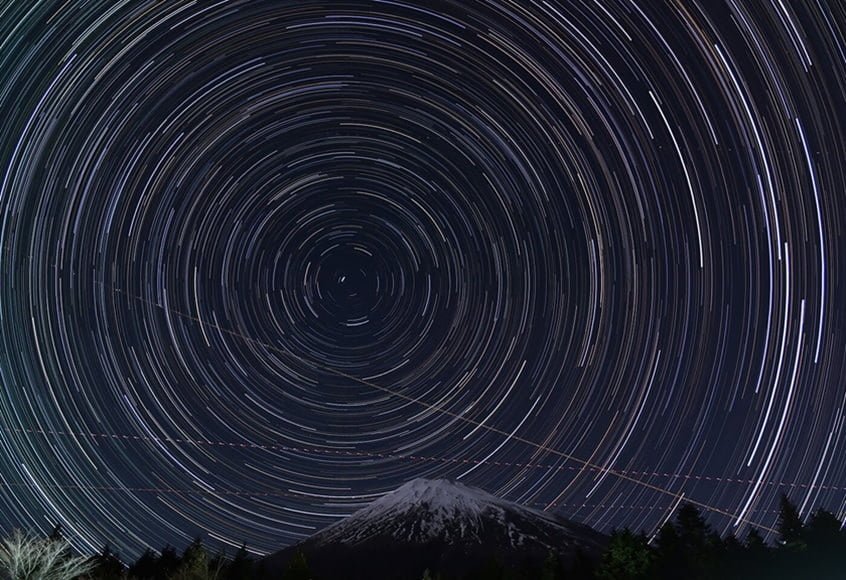
When shooting long exposures with the Canon G9 X mark II, especially in cold climates, battery life will be even shorter.
Compact cameras at this price point usually struggle with auto-focus, especially those with zoom lenses. Thankfully, the Canon G9 X Mark II is surprisingly fast to acquire focus on both static and moving subjects.
As I mentioned at the start of the review, auto-focus speed was a primary concern for me when compiling this list. Many cameras have excellent image quality but have slow auto-focus, so I left them out of this review.
The Canon G series has been a long-time favourite of amateur photographers, and the Canon G9 X Mark II is a solid travel camera at an affordable price.
In image quality stakes, it definitely can’t keep up with the others on this list, but it’s still more than adequate for the average family holiday. The zoom lens also offers great flexibility for those who are too lazy to move their feet…!
Travel Camera Buyer’s Guide
Haven’t got time to read through all my recommendations? Here’s the long and short of it:
📸 Only got $500 to spend? Get this renewed Sony a6000 with 16-50mm Power Zoom.
📸 Want the latest technology under $1,000? Get this Sony a6400 with 16-50mm Power Zoom.
📸 Don’t want the fuss of changing lenses? Get the Fujfilm X100V.
📸 Want a camera with the most affordable lenses? Get the Olympus OM-D EM10 Mark III.
📸 Just want the best small camera for travel regardless of price? Get the megapixel monster Sony a7RIII.
📸 Want the smallest travel camera you can slip in a shirt pocket? Get the excellent Ricoh GRIII.
I’ve shot with all these cameras and can assure you that whichever one you pick, it’ll serve you well on your next trip.
In all honesty, there’s no such thing as the best travel camera, since any modern camera could be considered the ‘best’, depending on your wants and needs.
You’ll just have to decide what criteria are most important to you when going shopping, so let’s take a closer look at that now.
How to Choose a Travel Camera
In this article, I make recommendations on what I believe to be the top travel camera of the year (so far), between $500~1,500.
Too many guides tell you that the best travel camera is some $2,000+ full frame model combined with a $1,000+ lens… this just isn’t realistic for the average traveler.
I wanted to create a guide that’s for the average person going on holiday, wanting a camera to capture some great-looking photos, but not wanting to spend more than their whole holiday on it!
I recommend that you check the 5 main criteria I used to evaluate all the different cameras on the market, and see which ones are most important to you.
1. Price
While I don’t want to advocate spending a fortune on a camera, it has to be said that you do get what you pay for when it comes to technology.
Yes, you can spend under $500 on a camera and produce some beautiful images, but investing a little more is advisable – not necessarily on the camera itself, but on the camera and some lenses.
However, to feel comfortable travelling with a camera, it can’t be too expensive either. I concentrated on cameras under $1,500 for this post, with a range of prices to suit all wallets.
2. Size/Weight
Great image quality used to come at a compromise to size/weight, but thanks to the advancements in sensor quality, this is no longer the case.
That said, there still comes a point where you may need to attach a bit of bulk to your compact travel camera, aka a lens.
While there are some excellent ‘fixed lens’ point and shoot cameras available that I recommend, being able to swap lenses can open up some creative opportunities, not to mention be more versatile while traveling.
The best camera to travel with is usually one that can be slipped into a pocket (compact cameras), or worn on a shoulder – definitely not something that requires a bulky DSLR camera backpack.
3. Image Quality
There are cameras under $200 that are lightweight and small, but they also only have average image quality – usually similar to your smartphone.
The travel cameras I’ve recommended here all have great image quality, for those once in a lifetime sights you see on holiday, or to capture your child’s face at Disneyland for the first time! This is one criterion that you really can’t ignore.
4. Auto Focus
It’s really important for a travel camera to have fast and accurate auto-focus. This allows you to get your shot and move on, leaving you to enjoy your holiday rather than worrying about whether your last photo was in focus.
The auto focus on smartphones is getting better, but it’ll still be years before they come close to the cameras featured here.
5. Flexibility
Waterproof cameras that function 50m underwater; zoom cameras that can see to the moon; shock-proof cameras that can survive an elephant stampede… and any other specific usage so-called cameras always sacrifice one of the above criteria, usually image quality. These are not good travel cameras.
For this post, I’m only interested in the cameras that are flexible enough to be used effectively in multiple situations that you may find yourself on holiday.
Frequently Asked Questions
What is the best travel camera in 2024?
There are a few good options, but we believe the Sony a6400 offers the best bang for your buck this year. Coupled with a lightweight prime or zoom lens, you can capture amazing images or 4k video on your next trip.
Is it worth buying a camera for travel?
Yes, definitely! Despite smartphones getting better and better each year, a dedicated camera is still the best option, especially when it comes to preserving your travel memories.
What should I look for in a travel camera?
Size, weight, battery life, ruggedness, auto-focus speed, image quality and price are all important criteria when shopping for a travel camera.
Travelling with a Camera | Final Words
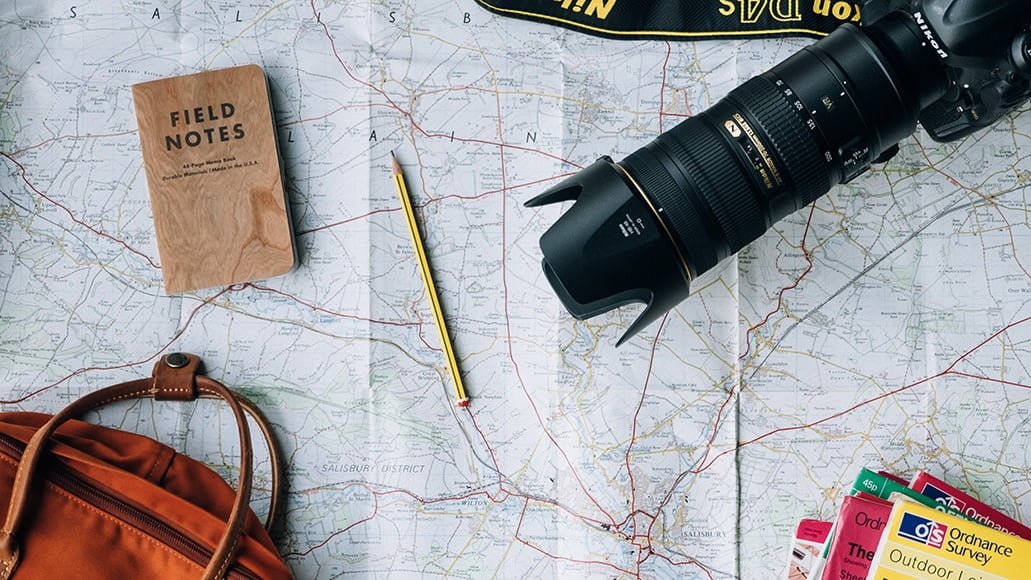
Don’t ever let me catch you on holiday with one of these hanging around your neck…!
I hope you enjoyed my roundup of what I believe to be the best cameras for travel in 2024. When you’ve just spent hundreds of dollars on a holiday, I know it’s tempting to skimp a little on camera purchases. After all, you’ve got your iPhone, right?!
However, I’m a strong believer in getting the best quality image every time you take a photo, as well as having a camera that’s enjoyable and convenient to use.
For photos of your loved ones on holiday right down to photos of the mountain you just skied down, capture those memories in all their glory by investing in a great camera for travel.
I have access to some of the best dSLR camera equipment available, but I’d never dream of using those big, bulky cameras for travel. I’ll also leave my expensive full frame mirrorless camera at home too – there’s no point risking something that value when on holiday.
Safe travels and happy snapping!

Offers incredible autofocus and amazing image quality in a compact, affordable body.





